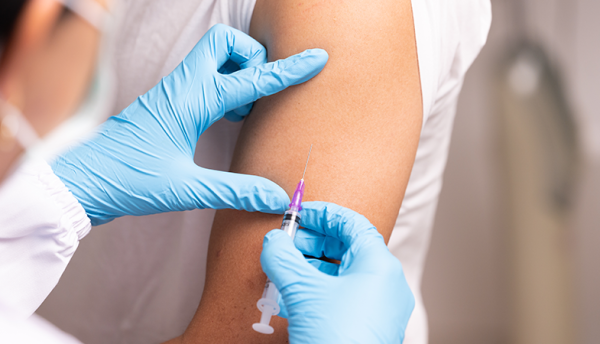Dr Ian Wood, Clinical Director for EMIS, and practicing GP, explores the role technology can play to help primary care extend the reach of the HPV vaccination programme and in turn, help reduce cervical cancer rates.
Each year millions of pounds and countless hours are invested into finding a cure for cancer. The hope is that one day the cancers that now devastate families and take lives become a thing of the past.
Remarkably, just a few years ago we had such a breakthrough for cervical cancer – a disease that 1 in 142 women in the UK will be diagnosed with, and that contributes to around 850 deaths each year.
A landmark study proved that when the human papillomavirus (HPV) vaccine was administered to girls aged between 12 to 13 years old, the risk of them developing cervical cancer was reduced by 87.7%.
The study, which harnessed data from 13.7 million women, also found that when vaccinated between 14 – 16 years old there was a 62% reduction and a 34% decrease for those who received the vaccination between the ages of 16 and 18.
It’s not every day that a proven route to reducing the risk of cancer is uncovered. And yet, in the same year that the research was announced, we saw vaccination rates decline – especially among those who could benefit the most – with a 7% drop in girls aged 12 to 13.
While the HPV vaccination is commissioned at a local level and delivered within secondary schools, primary care is also being called upon within the core contract to help capture any young women between the ages of 14 to 25 who may have slipped through the vaccination net.
As a GP I don’t want to let the opportunity pass by to play a part in reducing the risk of cervical cancer for any of my patients.
With the use of technology, the process needn’t default to adding further strain to primary care and could enable local collaboration to play a much larger, more effective role in the vaccination programme – which ultimately, could prove to be lifesaving for patients.
Readily available technology could be deployed to surface unvaccinated patients to groups able and eager to address the gap in a personalised and targeted approach.
Systems supported by data sharing agreements, such as EMIS’ Pathway clinical intelligence software, enable healthcare teams to identify cohorts of at-risk patients. Or in this example, anyone yet to receive the HPV vaccination – for intervention and to support the transfer and surfacing of relevant health information to whoever has the responsibility and capacity to act on it.
The technology is powerful. It is being used to reach a cohort of people that were previously deemed unreachable to help support NHS England’s drive to find and treat those unknowingly living with Hepatitis C. Ultimately to eliminate a disease that too often develops to become life-threatening. It’s not just about using technology to make it easier to identify who hasn’t had the HPV vaccine.
Clinical intelligence could also help us identify vaccination trends and themes that need to be addressed to improve uptake.
Using this insight to tackle health inequalities would be key.
Female cervical cancer incidence rates in England are 65% higher in the most deprived quintile compared with the least and women living in deprived areas are also less likely to have received the HPV vaccination.
Being able to see patterns in poor uptake and where opportunities might exist for outreach programmes, for example, centred around particular postcodes or in communities where English is not a first spoken language, can help plan for and stimulate locally sensitive initiatives to reverse this trend.
Furthermore, according to the National Institute of Health: ‘stigmas that associate the HPV vaccine with sexual activity and promiscuity are prevalent among parents of vaccine-eligible children and are associated with lower intentions to vaccinate one’s child’.
If that’s the case, primary care’s role in the programme couldn’t be more vital. It can provide healthcare professionals with another opportunity to explore this with parents with a clinician they are more familiar with. Down the line for the child, it can also provide them in adulthood with a second chance for consent and reduce the risk of developing cervical cancer. Something they may, or may not, even be aware of was decided for them as a child.
To answer these questions, we need a clear data-driven picture. Fortunately, we now have the data and the technology available to do just that, we just need to bring them both together.
Rarely are we given an opportunity to so greatly reduce the risk of cancer and so we must grab this opportunity with both hands.
Click below to share this article

